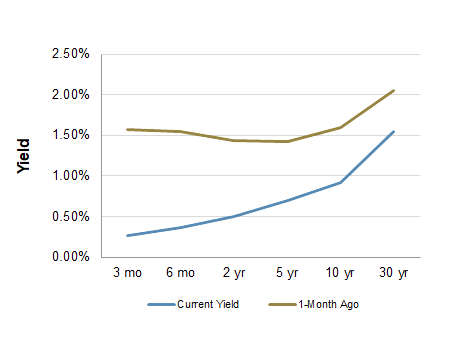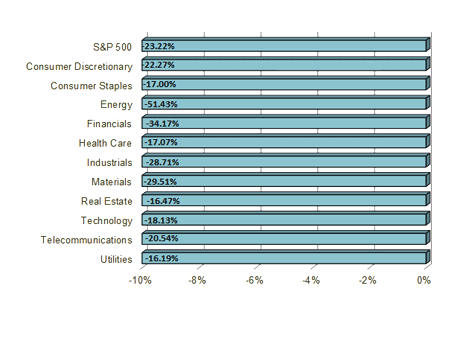Chief Economist Scott Brown discusses the latest market data.
The Federal Open Market Committee (FOMC) couldn’t wait for its scheduled policy meeting and lowered the federal funds target range by 100 basis points, to 0-0.25%, on Sunday, March 15. The FOMC also announced a resumption of large-scale asset purchases (quantitative easing) and encouraged banks to lend out of their capital and liquidity buffers. The Fed further expanded efforts to boost liquidity each day during the week, including providing support for money markets and boosting dollar swap lines with other countries. Lawmakers made progress on a large fiscal stimulus package. These efforts will not prevent the economy from weakening, but they should lessen the damage and help to support the eventual recovery.
Retail sales fell 0.5% in the initial estimate for February, reflecting little impact from COVID-19. The Index of Leading Economic Indicators edged up 0.1% in February, but will fall sharply in March. Residential construction figures were mixed in February, reflecting continued strength in single-family activity and the usual noise in multi-family. Weekly jobless claims jumped by 70,000, to 281,000, with much larger gains anticipated over the next few weeks.
Next week, the incoming economic reports will mostly fail to reflect the impact of COVID-19. That will change next week when the March figures begin to arrive. However, jobless claims are expected to surge in the near term. The highest level for claims was 695,000 (October 2, 1982) and the largest weekly increase was 172,000 (July 25, 1992). The UM Consumer Sentiment survey should reflect further concern about the virus (this is a monthly average; attitudes likely fell sharply toward the end of the survey period).
Indices
| Last | Last Week | YTD return % | |
|---|---|---|---|
| DJIA | 20087.19 | 21200.62 | -29.61% |
| NASDAQ | 7150.58 | 7201.80 | -20.31% |
| S&P 500 | 2409.39 | 2480.64 | -25.42% |
| MSCI EAFE | 1382.01 | 1491.75 | -32.15% |
| Russell 2000 | 1058.75 | 1122.93 | -36.54% |
Consumer Money Rates
| Last | 1 year ago | |
|---|---|---|
| Prime Rate | 3.25 | 5.50 |
| Fed Funds | 0.00 | 2.40 |
| 30-year mortgage | 4.13 | 4.29 |
Currencies
| Last | 1 year ago | |
|---|---|---|
| Dollars per British Pound | 1.149 | 1.320 |
| Dollars per Euro | 1.069 | 1.141 |
| Japanese Yen per Dollar | 110.71 | 110.70 |
| Canadian Dollars per Dollar | 1.451 | 1.331 |
| Mexican Peso per Dollar | 24.031 | 18.829 |
Commodities
| Last | 1 year ago | |
|---|---|---|
| Crude Oil | 25.22 | 59.83 |
| Gold | 1479.30 | 1307.80 |
Bond Rates
| Last | 1 month ago | |
|---|---|---|
| 2-year treasury | 0.38 | 1.38 |
| 10-year treasury | 1.00 | 1.48 |
| 10-year municipal (TEY) | 3.68 | 1.78 |
Treasury Yield Curve – 03/20/2020

As of close of business 03/19/2020
S&P Sector Performance (YTD) – 03/20/2020

As of close of business 03/19/2020
Economic Calendar
| March 24 | — | New Home Sales (February) |
| March 25 | — | Durable Goods Orders (February) |
| March 26 | — | Initial Claims (week ending March 21) |
| — | Real GDP (4Q19, 3rd estimate) | |
| March 27 | — | Personal Income and Spending (February) |
| — | UM Consumer Sentiment (March) | |
| March 31 | — | CB Consumer Confidence (March) |
| April 1 | — | ISM Manufacturing Index (March) |
| April 2 | — | Challenger Job-Cuts (March) |
| April 3 | — | Employment Report (March) |
| — | ISM Non-Manufacturing Index (March) | |
| April 10 | — | Good Friday Holiday (markets closed) |
| April 29 | — | FOMC Policy Decision |
All expressions of opinion reflect the judgment of the Research Department of Raymond James & Associates, Inc. and are subject to change. There is no assurance any of the forecasts mentioned will occur or that any trends mentioned will continue in the future. Investing involves risks including the possible loss of capital. Past performance is not a guarantee of future results. International investing is subject to additional risks such as currency fluctuations, different financial accounting standards by country, and possible political and economic risks, which may be greater in emerging markets. While interest on municipal bonds is generally exempt from federal income tax, it may be subject to the federal alternative minimum tax, and state or local taxes. In addition, certain municipal bonds (such as Build America Bonds) are issued without a federal tax exemption, which subjects the related interest income to federal income tax. Municipal bonds may be subject to capital gains taxes if sold or redeemed at a profit. Taxable Equivalent Yield (TEY) assumes a 35% tax rate.
The Dow Jones Industrial Average is an unmanaged index of 30 widely held stocks. The NASDAQ Composite Index is an unmanaged index of all common stocks listed on the NASDAQ National Stock Market. The S&P 500 is an unmanaged index of 500 widely held stocks. The MSCI EAFE (Europe, Australia, Far East) index is an unmanaged index that is generally considered representative of the international stock market. The Russell 2000 index is an unmanaged index of small cap securities which generally involve greater risks. An investment cannot be made directly in these indexes. The performance noted does not include fees or charges, which would reduce an investor’s returns. U.S. government bonds and treasury bills are guaranteed by the US government and, if held to maturity, offer a fixed rate of return and guaranteed principal value. U.S. government bonds are issued and guaranteed as to the timely payment of principal and interest by the federal government. Treasury bills are certificates reflecting short-term (less than one year) obligations of the U.S. government.
Commodities trading is generally considered speculative because of the significant potential for investment loss. Markets for commodities are likely to be volatile and there may be sharp price fluctuations even during periods when prices overall are rising. Specific sector investing can be subject to different and greater risks than more diversified investments. Gross Domestic Product (GDP) is the annual total market value of all final goods and services produced domestically by the U.S. The federal funds rate (“Fed Funds”) is the interest rate at which banks and credit unions lend reserve balances to other depository institutions overnight. The prime rate is the underlying index for most credit cards, home equity loans and lines of credit, auto loans, and personal loans. Material prepared by Raymond James for use by financial advisors. Data source: Bloomberg, as of close of business March 19, 2020.
Markets & Investing Members of the Raymond James Investment Strategy Committee share their views on...
Markets & Investing Review the latest Weekly Headings by CIO Larry Adam. Key Takeaways ...
Technology & Innovation Learn about a few simple things you can do to protect your personal information...